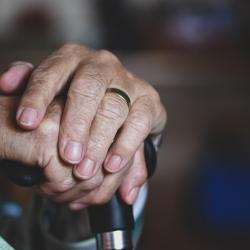Common Causes of Hip Fractures & How to Prevent Them
Hip fractures can be a significant health concern, often leading to significant pain, an increased risk of disability, and even mortality. By understanding the leading causes of hip fractures and taking proactive steps to reduce the risk of them occurring, you can protect your health for many years to come. If you do suffer a hip fracture in a slip and fall accident caused by someone else’s negligence, you may be able to seek damages with the help of an experienced attorney.
The Dangers of Hip Fractures
Hip fractures are frequently caused by falls, which can be common among older adults. In many cases, fractures can require surgery and prolonged rehabilitation. In severe cases, hip fractures can cause medical complications such as pneumonia, blood clots, or even death.
Understanding the Risks
There are multiple factors that increase a person’s risk of suffering a hip fracture. One of the most significant risk factors is age, with older adults being more prone to falls and subsequent broken bones. Individuals with osteoporosis, which is a condition that causes weakened bones, also have a higher risk of suffering all kinds of fractures. Some other factors that can contribute to hip fractures include medications affecting coordination or balance, arthritis, vision impairment, or neurological conditions. Certain lifestyle decisions, such as poor nutrition or a sedentary lifestyle, can also contribute to weakened bones and an increased risk of falling.
Preventing Falls
Most hip fractures are caused by falls. To reduce the risk of suffering an injury from a fall, it’s vital to take steps to improve your coordination, strength, and balance. For people with mobility restrictions, carefully planned home safety modifications can reduce the risk of falls. Install handrails in bathrooms in hallways, ensure adequate lighting in your home, and use non-slip mats on slippery floors.
Regular exercise, such as yoga, tai chi, or resistance training, can help strengthen your muscles and improve your balance. Performing these exercises can reduce the risk of osteoporosis and increase bone density.
Maintaining Bone Health
Osteoporosis is a major risk factor for hip fractures. To maintain strong bones, it's essential to consume adequate amounts of calcium and vitamin D. Osteoporosis can be incredibly difficult to detect, as there are no symptoms of the condition until a person suffers a fracture, usually from a relatively minor fall. To identify individuals who are at higher risk of osteoporosis, regular bone density tests should be conducted. Early detection allows for effective intervention, reducing the risk of fractures.
Medical Interventions
In some cases, people at very high risk of hip fractures may need to undergo medical treatment to help slow bone loss and strengthen their bone structure. Medications such as bisphosphonates can be useful in such a situation. If you or a loved one have a history of osteoporosis or falls, discuss these risk factors with a doctor to determine the best plan to reduce the chances of suffering an injury.
Reducing the Risk of Suffering a Hip Fracture
Hip fractures can significantly impact a victim’s quality of life and overall health. By developing an understanding of how hip fractures are caused and how they can be avoided, you reduce your chances of suffering serious harm. Regular check-ups, healthy lifestyle choices, and appropriate medical interventions can help you preserve your bone health and avoid hip fractures.
More to Read:
Previous Posts:











